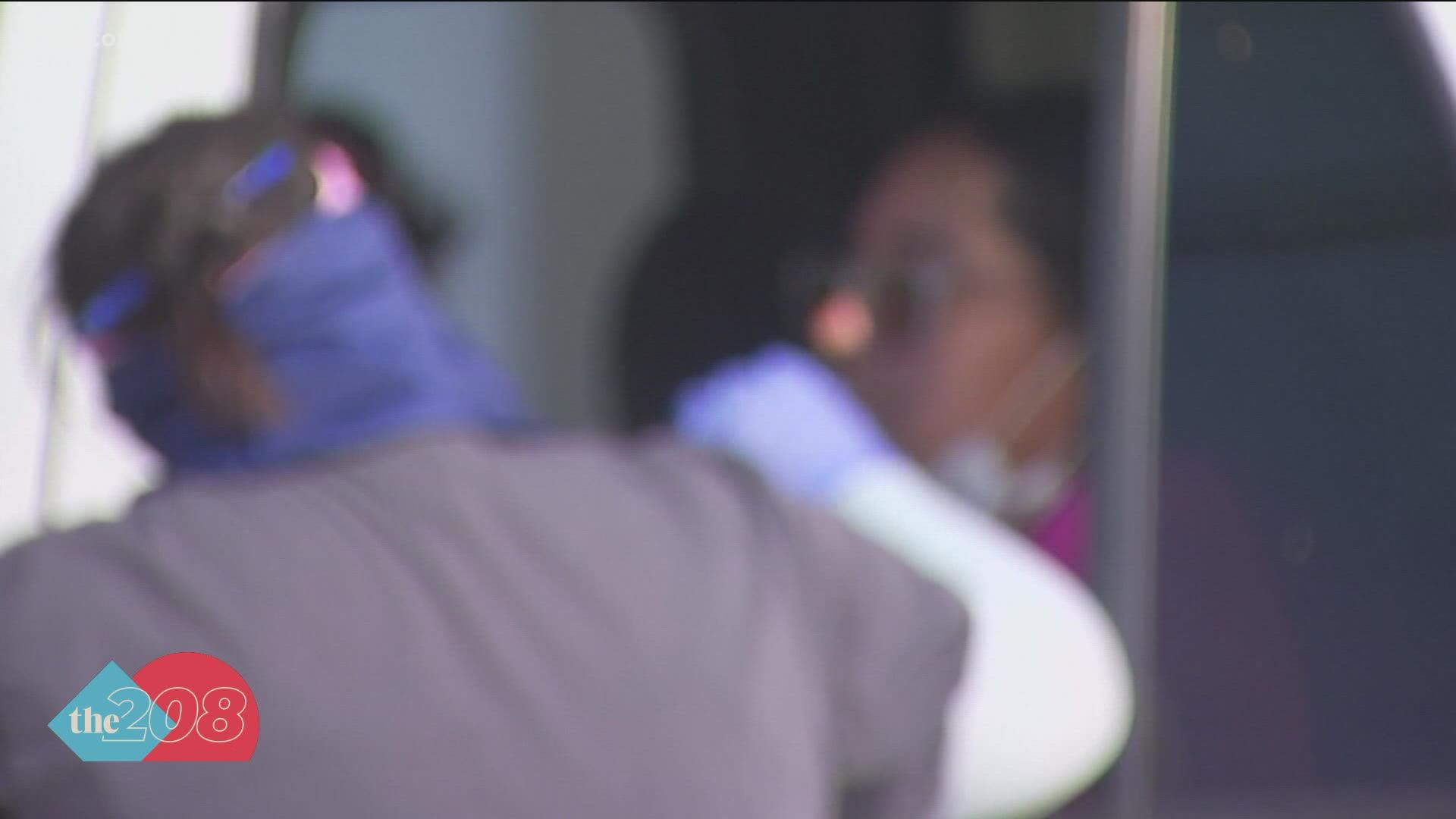BOISE, Idaho — With the spread of the highly contagious Omicron COVID variant, getting tested for the virus is, again, a popular activity. Just ask people like the team at Crush the Curve Idaho.
“Yes, we have been really busy this week we have been running a small community site at full capacity,” said Maricela Rios, testing site coordinator for Crush the Curve.
Rios says people stop by for a COVID test for a variety of reasons, but they’ve found that a lack of rapid tests certainly pushes people to get a lab-based PCR test through Crush the Curve.
“Yeah, there’s been some frustration that’s been expressed. Like, 'we are looking for a rapid,' 'do you know where you can get a rapid,'” Rios said.
Rios says this past week they were very busy, doing as many tests as possible during the day.
The plain truth is that rapid at homes tests are out of stock nationwide. The only option some have is trying to get an appointment at a clinic.
“Testing is very busy. It seems that throughout the course of the pandemic what we’ve observed is every time there is a huge spike in positivity there is a corresponding increase in demand for testing,” said Dr. Christopher Ball, Chief of the Idaho Bureau of Laboratories
Unlike the store-bought rapid tests, Dr. Ball says Idaho is seeing availability for people looking to get tested in a clinic and have their samples sent to a lab.
“They seem to say that they have adequate PCR capability. There may be some limitations, for a lot of healthcare setting staffing has become an issue so I think that may be what is limiting some of the appointment times. From what we are hearing, there is PCR testing if people are willing to wait,” Ball said.
The wait is for getting a test and for getting the result. Combined, the wait can be a few days. That’s why rapid at-home tests are so popular right now.
Some good news this week, the Biden administration says they are ordering one billion rapid tests to send to Americans for free.
It’s important to note though that people who take rapid tests at home are not included in data metrics tracked by the state. So, as people continue to shift away from PCR tests taken at a clinic, public health experts miss out on valuable data.
“I think it's a real balancing act. We definitely need to have people getting PCR tests so that we can continue to describe the dynamics of the pandemic. But as we can move towards more convenient at-home options, I think it's better for people in terms of convenience and being able to hopefully limit transmission,” Ball said.
Dr. Ball says the at-home rapid tests can be really helpful though if people take them seriously.
“I would be willing to sacrifice a little bit of the visibility we have on the pandemic if people are actually going to take a test and isolate themselves if they're positive and take appropriate actions to limit transmission,” Ball said.
So, how does the state lab and public health experts adapt to people leaning more towards at-home testing?
“We in public health love to have data so that we can communicate to the public the reality of what's happening. As we start seeing fewer and fewer people contributing to the test numbers that we can report on, it does become more challenging to interpret what the pandemic really looks like,” Ball said.
Dr. Ball adds that the state is evaluating options for tracking the virus with other metrics like wastewater testing.
Watch more Local News:
See the latest news from around the Treasure Valley and the Gem State in our YouTube playlist:

